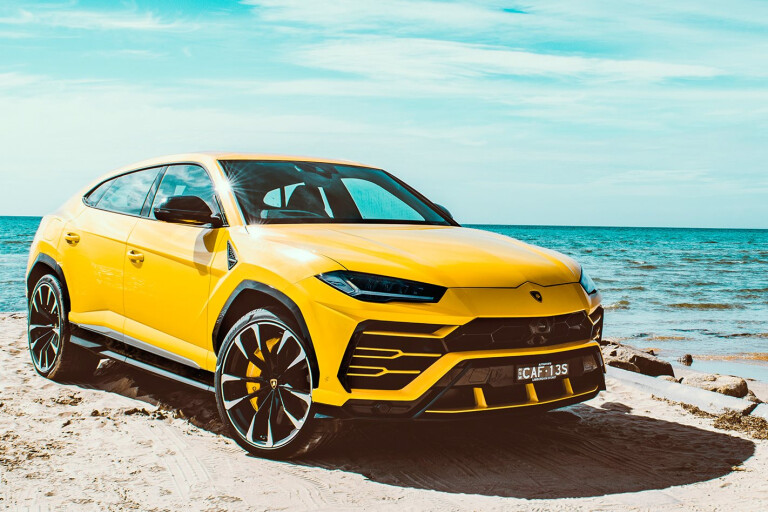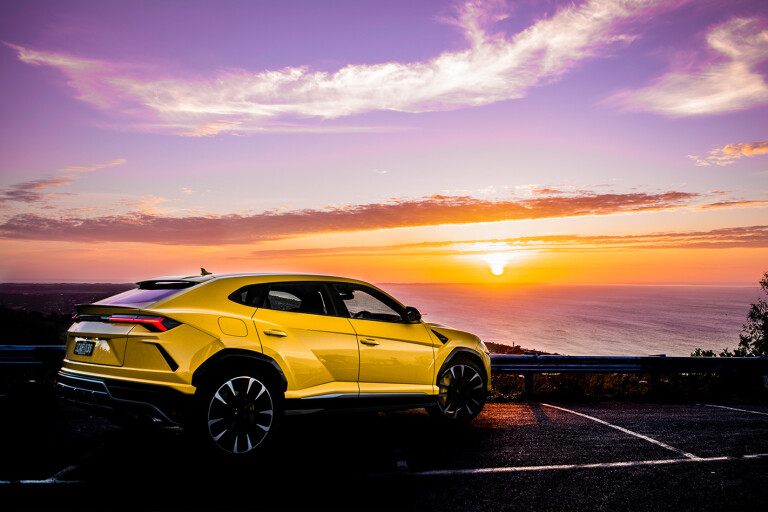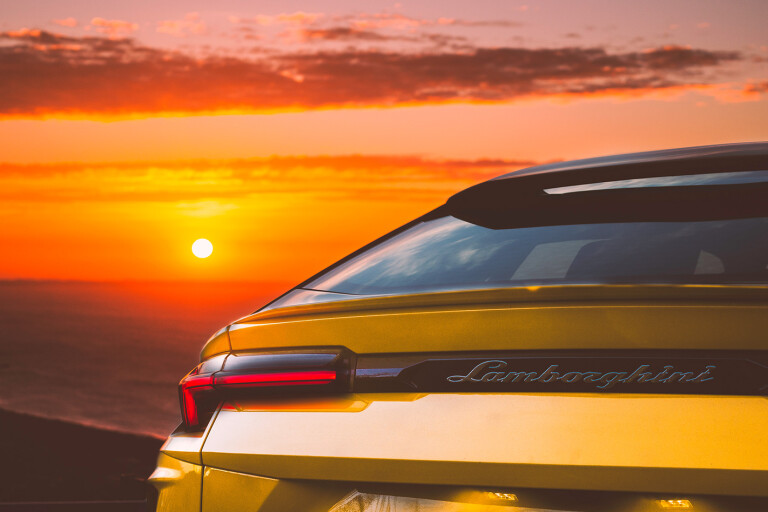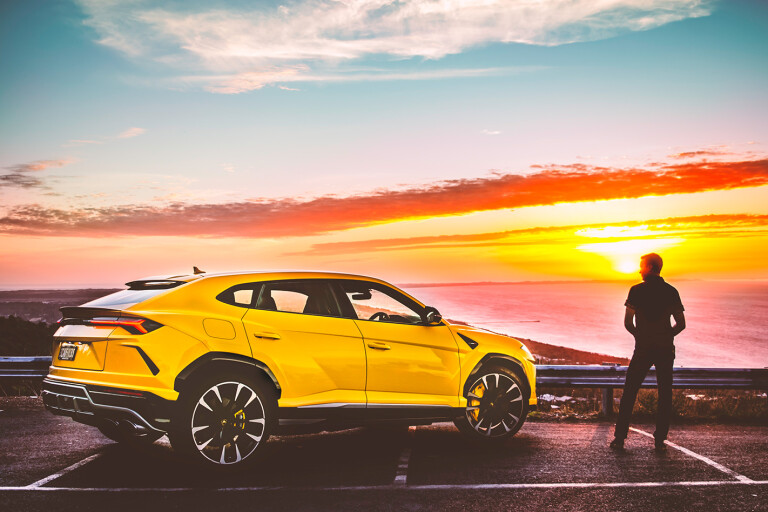
It has been seven years since Lamborghini floated the idea of a modern SUV with the first appearance of the Urus in concept form at the 2012 Beijing motor show. But for many, that hasn’t been long enough to get used to the idea of a high-riding Lambo.
Others will leap to the defence of the Italian car maker, recalling the monstrous LM002 military vehicle produced by Lamborghini between 1986 and 1993 as evidence that an off-roader is not such an alien concept to the company.
But a vast majority of car enthusiasts are going to take more convincing that an all-terrain model which shares underpinnings and oily bits with models from the Audi, Porsche and even Volkswagen stables truly deserves to wear the raging bull on its nose.

Love or hate an SUV within Lamborghini’s hallowed ranks, it seems the recipe is already working. Local outlets are reporting that many existing customers are jumping out of Aventadors and Huracans into Uruses and there is about a nine-month wait if you order one today.
With a starting price of $390,000 before on-road costs and the deeply tempting (and costly) options list, the Urus is set to become the company’s cash bull.
We saddled up what is arguably Lamborghini’s most significant model to date, to see if it’s more bull run or school run. Here’s our list of Urus features that would cause founder Ferruccio Lamborghini to both nod in approval and simultaneously turn in his grave.

Engine angst
Lamborghini’s current sportscars are powered by naturally aspirated V10 and V12 engines tucked away in the middle of the vehicle, but the Urus has a V8 mounted under its bonnet and this will grind a purist’s gears.
Some previous models have employed V8 power including the Urraco, Silhouette and Jalpa but in all cases (regardless of the model and engine configuration), natural aspiration and the accompanying soundtrack have been a Lamborghini given.
Not the Urus, however, in the name of efficiency without a power compromise, it uses a pair of turbochargers and this won’t sit happily with the traditionalists.
Style and substance?
Our test car was dressed up in Giallo Auge with a few extras including massive wheels and a pack which colour codes the front epsilon details and other exterior trims, and adds gloss black throughout.
A bright yellow Lamborghini with massive wheels and sinister black highlights to its already aggressive stance is a very good start at upholding the Lambo look.
Its elegant roofline is about as coupe as any SUV can afford to be without entirely robbing the practicalities of rear seat headroom and boot space, and the overall proportions somehow work as well as they do due to the Urus’ larger than life dimensions.

Through a zoom lens, the Urus has all the details, aggressive angles, gulping vents and beautiful design touches of its two-seater siblings, but viewed from a few steps back, the raised ride height, clear air underneath and space in its wheel arches will divide and polarise opinion.
But one area that is certainly typical Lamborghini is the level of customisation on offer. Even at a ‘standard’ showroom level, customers are offered colour, trim and material options that almost guarantee no two Uruses will ever be the same.
Get stuck into the Ad Personam options and the sky really is the limit – as long as you have the budget.
Location, location, location
By locating the engine at the front of the car not mid-ship like its Aventador and Huracan siblings, the Urus has a spacious cabin. There’s room for a second row of seating and even a 616-litre boot behind that, which can expand when the rear seats are folded.
Unlike any Lamborghini of recent years, the Urus is packed full of practical features including various cabin storage pockets and the second row of seating is ample even for tall adults. Standard versions offer accommodation for up to five people, while an optional two-seat second-row boosts luxury and comfort for rear passengers.
There’s no doubt that the Urus is the most versatile and practical vehicle in the company’s history, but are those virtues that fit the Lamborghini mantra?

Straight line performance
The Urus’ 4.0-litre V8 can be found powering other machines in the Volkswagen Group line-up including the Audi RS6 Avant, Bentley Bentayga and Porsche Cayenne Turbo, but nothing has yet packed the punch of the Urus.
Twin turbos have been wound up to lift the power to a monumental 478kW, while torque is rated at 850Nm. Only the Jeep Grand Cherokee Trackhawk can brag more SUV muscle. Subsequently, the Urus accelerates like a supercar with a zero to 100km/h sprint taking just 3.6 seconds.
And it scrubs that speed just as efficiently with exotic carbon ceramic brake discs in every corner and massive ten-piston callipers on the front axle. At low speed the expensive discs have a less than ideal grabby nature – not uncommon with carbon ceramic discs – but with a little heat and use, the huge 440mm front rotors can slow the Urus with incredible ease.

High achiever
In the name of road-holding and outright grip, the Aventador and Huracan sit very low on the road but the Urus measures 1638mm in height and its flexible suspension allows up to 250mm of ground clearance.
That enables the Urus to tackle far more challenging terrain than perfect racetrack asphalt that the Aventador and Huracan are almost exclusively confined to. But it comes at a cost to dynamics. For a large SUV, the Urus behaves surprisingly well in fast corners and is certainly fun to push through twisty roads, but it’s no supercar.
There’s plenty of hot SUV dynamic know-how borrowed from other large SUVs that roll on the same platform (Volkswagen’s MLB) but despite the Urus’ unusually light kerb weight of less than 2.2 tonnes, there’s no hiding its tall stature and mass.
It might wear the same badge, but there’s no comparison between the Urus road manner and its thoroughbred two-seater siblings.
Sounds legit
It might be short a few cylinders when compared with the supercars in its ranks, but it’s clear that significant development was allowed for making the Urus sound as outspoken as the mid-engined models.
In more sedate driving modes – there are six plus Ego in the Anima selector – the quad tailpipes are chatty if not completely mute with a pleasant but distinctly un-Lamborghini note. Flick the lever into Sport or Corsa however, and the Urus produces a report that is somewhere between V8 Supercar and demonic road car.
It might share an engine with some other models, but nothing sounds like Lamborghini’s V8 soundtrack, and if you happen to hear the Urus before you see it, you probably won’t believe your ears or eyes.


COMMENTS